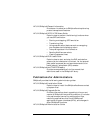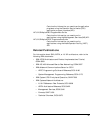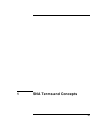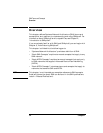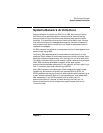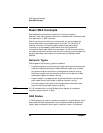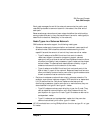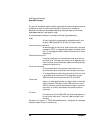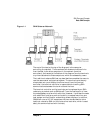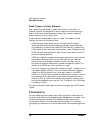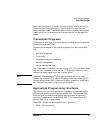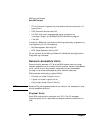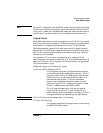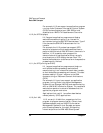
Chapter 1 27
SNA Terms and Concepts
Basic SNA Concepts
Each node manages its end of the network communication paths, and
uses SNA protocols to communicate with the node at the other end of
each path.
Because subarea networks and peer networks define the relationships
among nodes differently, they also use different terms for node types (to
describe the roles that nodes play in the network).
Node Types in a Subarea Network
SNA subarea networks support the following node types:
• Subarea nodes control communication and network resources for all
attached nodes. SNA classifies subarea nodes according to their
capabilities and the amount of control they have over other nodes:
• Type 5 nodes provide SNA functions that control network
resources, support transaction programs, support network
operators, and provide end-user services. Because these functions
are often provided by host processors, type 5 nodes are also known
as host nodes. The devices and resources controlled by a type 5
subarea node constitute the domain of that node.
• Type 4 nodes provide SNA functions that route and control the
flow of data in a part of the network. Because these functions are
often provided by communication controllers, type 4 nodes are also
known as communication controller nodes.
• Peripheral nodes serve subordinate roles in subarea networks. For
example, a peripheral node can support 3270 emulation or dependent
LU 6.2 communication. Peripheral nodes are devices such as
distributed processors, cluster controllers, or workstations; they are
also classified into type 2.0 and type 2.1 nodes:
• Type 2.0 nodes are always controlled by a type 4 or 5 node. They
cannot establish communication with other nodes without the
participation of a type 4 or 5 node. Type 2.0 nodes are referred to
as dependent nodes.
• Type 2.1 nodes can act as dependent nodes, but they can also
communicate directly with other type 2.1 nodes.
NOTE HP-UX workstations running SNAplus2 can function as type 2.1 or type
2.0 nodes.



